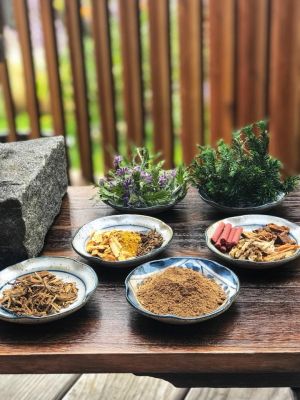Burnt offerings
In general, there are three distinctive but often overlapping types of burnt offerings practiced in Tibetan-Himalayan Buddhism. They are the sangchö (bsang mchod བསང་མཆོད་) , surchö (gsur mchod གསུར་མཆོད་) and jinsek (sbyin sreg སབྱིན་སརེག་).
Jinsek
Jinsek is the most specialized and complicated and is only performed by those who are properly and formally trained, often after having completed a required period of personal retreat. Jinseks are “fire-offerings” and are historically related to the homa-rites of ancient Indian, Vedic traditions. In a jinsek, various substances are put into a ritual fire and this fire is seen as the means to transfer the offerings from our realm to the divine realms. There can be specific functions of the particular jinsek. These are the four ritual-activities: for pacification of negative conditions, increase of positive factors, control over circumstances or destruction of hostile forces.
Surchö
Surchö is the practice of providing nourishment for spirit-beings - in particular those who have recently passed. In the Tibetan and Himalayan regions surchö is offered by burning a simple mix of roasted barley flour with what’s known as the “three sweets” (sugar, honey and molasses) and the “three whites” (milk, butter and curd) - all part of the staple diet in these regions. In a surchö, the offerings are burned in a way to create maximum smoke carrying the scent of the food offered.Finally, surchö is offered at dusk and they should be offered in “soft” burning vessels such as a clay bowl, avoiding the use of “hard” containers made of iron for example.
Sangchö
Sangchö - is a hybrid ritual that has one foot in the indigenous, native, pre-Buddhist world of Tibet and another foot in the principles of Buddhadharma. Whereas jinsek and surchö are offerings, sangchö are primarily for cleansing. And they are done often in the mornings. When performing sangchö, our stated goal is to remove, to clear and to eradicate the harmful contaminants (sgrib pa, སགརིབ་པ་) that have attached themselves to us over this and many other past lifetimes. These contaminants/obscurations afflict us and when we are afflicted, we suffer. Sangchö is also a means for resolving conflict. It is also a means for reestablishing balance and harmony in situations where these factors have been disrupted.
[[1]]
